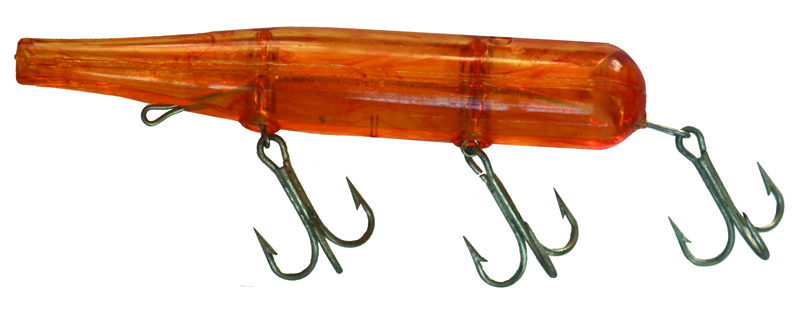
On October 19, 1963 while fishing off Squibnocket I hooked by far the largest striped bass I have ever seen. The fish hit a Reverse right at the gunwale, and my friend Stuart Hunter and I both saw it clearly. The bass quickly scraped the plug out on a nearby rock, and we looked at each other and simultaneously shouted “EIGHTY!” It looked THAT BIG.
One of the most famous of all striped bass plugs, the Reverse Atom was born on the beach at North Truro on Cape Cod on a hot August afternoon in 1949. A great school of large bass was milling around an offshore sandbar, and they refused all of the offerings that surfcasters were throwing. A few anglers combined talents to solve the equation and crafted a plug that looked like a squid – a favorite striper food. Squid swim by expelling water, propelling themselves backward in abrupt jet-like motions; so the fishermen took an amber plastic Atom swimming plug and reversed the rigging so that it came in tail-first. And they drilled two holes in the rear compartment, permitting water to enter, thereby increasing casting weight and distance.
The bass absolutely exploded on it, and the design became so popular that Atom started manufacturing them that way.
The Reverse is also known as the Whistling Plug: when you cast it the two drilled holes create a distinct whistling sound. I caught numerous large bass up to forty-eight pounds on the Reverse, but my most memorable fish were ones that got away.
On June 12, 1964 I hooked a bass on a Reverse off Squibnocket that broke my line and escaped. Two days later the fish was caught at Norton Point by my friend Ray Metcalf bottom fishing with a clam bait. My Reverse was still hooked to the side of its head. The bass weighed forty-three pounds.
And then there was that eighty!
The Reverse is no longer made. If you see one at a yard sale, buy it.




